 Your new post is loading...
 Your new post is loading...
OBJETIVOS:
• Repasar las pruebas diagnósticas Inmunológicas para el Diagnóstico y Seguimiento de Enfermedades Autoinmunes no-órgano-específicas.
• Conocer las presentaciones clínicas de las patologías de Autoinmunes sistémicas más frecuentes.
• Entender la correlación de las manifestaciones clínicas con las pruebas analíticas en estas enfermedades.
• Ser capaces de emitir un informe diagnóstico de calidad, preciso y entendible para los clínicos.
• Ser capaces de proponer el abordaje terapéutico de las patologías diagnosticadas.
Those in self-nonself camp, the more dominant of the two camps, would see a threat in the molecular mimics and link those to autoimmunity. Whereas the danger or damage theory proponents would argue that the presence or absence of molecular mimicry by itself means nothing unless the mimicked code evokes damage. Data can be found supporting either argument.
The role of dendritic cells in autoimmunityDipyaman Ganguly,Stefan Haak,Vanja Sisirak& Boris ReizisAffiliationsCorresponding authorNature Reviews Immunology13,566–577(2013)doi:10.1038/nri3477
Gastroenterology Medical Article: Celiac Disease and Autoimmunity: Review and Controversies (Celiac Disease and Autoimmunity: Review and Controversies: Current Allergy and Asthma Reports http://t.co/EpTBXJQdva...
Rheumatoid arthritis (RA) is an autoimmune disorder in which immune cells attack the joints, causing inflammation, swelling, and erosion. Specific sets of immune cells, known as T cells, are responsible for inducing disease. In this issue of the Journal of Clinical Investigation, researchers led by Harvey Cantor at Harvard University analyzed the contributions of different subsets of T cells to an RA-like condition in mice.
Information about autoimmunity and autoimmune related diseases. The American Autoimmune Related Diseases Association. Take our autoimmunity survey (@AARDATweets: "Autoimmunity, A Major Women's Health Issue" is now in Spanish!
Cellular Immunology Volume 280, Issue 1, November 2012, Pages 16–21 Shiying Shaoa, 1,Fan Heb, 1,Yan Yanga,Gang Yuana,Muxun Zhanga,Xuefeng Yua, , a Division of Endocrinology, Tongji Hospital, Tongji Medical College of Huazhong University of Science & Technology, Wuhan, PR Chinab Division of Nephrology, Tongji Hospital, Tongji Medical College of Huazhong University of Science & Technology, Wuhan, PR China http://dx.doi.org/10.1016/j.cellimm.2012.11.001,
Elimination of Germinal Center-Derived Self-Reactive B Cells Is Governed by the Location and Concentration of Self-Antigen Immunity, 08 November 2012
10.1016/j.immuni.2012.07.017 Authors Tyani D. Chan, Katherine Wood, Jana R. Hermes, Danyal Butt, Christopher J. Jolly, Antony Basten, Robert Brink Summary Secondary diversification of the B cell repertoire by immunoglobulin gene somatic hypermutation in the germinal center (GC) is essential for providing the high-affinity antibody specificities required for long-term humoral immunity. While the risk to self-tolerance posed by inadvertent generation of self-reactive GC B cells has long been recognized, it has not previously been possible to identify such cells and study their fate. In the current study, self-reactive B cells generated de novo in the GC failed to survive when their target self-antigen was either expressed ubiquitously or specifically in cells proximal to the GC microenvironment. By contrast, GC B cells that recognized rare or tissue-specific self-antigens were not eliminated, and could instead undergo positive selection by cross-reactive foreign antigen and produce plasma cells secreting high-affinity autoantibodies. These findings demonstrate the incomplete nature of GC self-tolerance and may explain the frequent association of cross-reactive, organ-specific autoantibodies with postinfectious autoimmune disease. A summary in Garvan Institute: http://www.garvan.org.au/news-events/news/how-infection-can-trigger-autoimmune-disease.html A previous publication of this theory: Mechanisms for the induction of autoimmunity by infectious agents Kai W. Wucherpfennig Published in Volume 108, Issue 8 (October 15, 2001)
J Clin Invest. 2001;108(8):1097–1104. doi:10.1172/JCI14235. http://www.jci.org/articles/view/14235
Paolo Sfrisoa, , ,Francesco Casoa,Sofia Tognonb,Paola Galozzia,Alessandra Gavaa,Leonardo Punzia a Rheumatology Unit, Department of Medicine, University of Padova, Padova, Italyb Ophthalmology Unit, Department of Neurosciences, University of Padova, Padova, Italy http://dx.doi.org/10.1016/j.autrev.2012.07.028, Blau syndrome (BS) is a rare autosomal dominant, autoinflammatory syndrome characterized by the clinical triad of granulomatous recurrent uveitis, dermatitis and symmetric arthritis. The gene responsible for BS has been identified in the caspase recruitment domain gene CARD15/NOD2. In the majority of patients, the disease is characterized by early onset, usually before 3–4 years of age. The manifestations at disease onset are usually represented by articular and cutaneous involvement signs, generally followed later by ocular manifestations which are often the most relevant morbidity of BS. In some cases the presence of fever is also observed; atypical cases of BS have been reported with cardiovascular, neurological, renal, intestinal and other organ involvement. The rarity and the variations in the severity and evolution of its expressions do not permit sufficient data about optimal treatment for patients with BS. The first step of therapy is represented by the use of corticosteroids and successively, in case of unsatisfactory response, by additional treatment with immunosuppressive agents. The results with biologic anti-cytokine agents, such as anti-TNFα and anti-IL1β, are different, particularly with regard to ocular morbidity. Clinical and genetic aspects of the familial and the sporadic form of BS will be discussed and focused on. A description of a case study of an Italian family is also included. Blau syndrome, clinical and genetic aspects http://t.co/BALw5P69...
Alberto Martini, Dipartimento di Pediatria, Università di Genova, Pediatria II e Reumatologia, Istituto G Gaslini, Genova, Italy http://dx.doi.org/10.1016/j.autrev.2012.07.022, Systemic juvenile idiopathic arthritis (sJIA) sets well apart from all the other forms of JIA. Several observations show that sJIA is etiopathogenically different from all the other forms of JIA and has a prominent autoinflammatory component. A major role in the pathogenesis is played by two proinflammatory cytokines, interleukin-6 and interleukin-1. The specific inhibition of these two cytokines is going to change not only the therapeutic approach to the disease but also, presumably, its long term prognosis.
Sci Transl Med 24 October 2012:
Vol. 4, Issue 157, p. 157ra142
Sci. Transl. Med. DOI: 10.1126/scitranslmed.3004385 CancerTargeting Cancer with a Lupus Autoantibody this study provides the basis for the potential use of a lupus anti-DNA antibody in cancer therapy and identifies lupus autoantibodies as a potentially rich source of therapeutic agents. James E. Hansen1,2,*,Grace Chan3,Yanfeng Liu1,Denise C. Hegan1,Shibani Dalal1,Eloise Dray4,†,Youngho Kwon4,Yuanyuan Xu4,Xiaohua Xu5,Elizabeth Peterson-Roth1,Erik Geiger1,Yilun Liu5,Joseph Gera3,6,Joann B. Sweasy1,2,7,8,Patrick Sung1,2,4,Sara Rockwell1,2,9,Robert N. Nishimura3,10,Richard H. Weisbart3 andPeter M. Glazer1,2,8,* See also a summary in the news: http://www.voanews.com/content/autoimmune-disease-antibodies-help-fight-cancer/1533596.html?goback=.gde_151241_member_179119923
Neutrophils are essential components of the haematopoietic and immune system, and quantitative or qualitative abnormalities of neutrophils can result in life-threatening infection. Neutropenia is a low neutrophil count and results from decreased production, accelerated utilisation, increased destruction, or a shift in compartments. A combination of these mechanisms may be present. Causes can be congenital or acquired. The most serious complication of neutropenia is infection, which can be fatal. The source is usually endogenous flora of the gut and mucosa (commonly Staphylococcus and gram-negative organisms). Fungal infections occur with increased frequency, but there is no increased risk of viral or parasitic infection. Common sites of infection include mucous membranes (gingivitis, stomatitis, perirectal abscesses), skin (cellulitis), and lungs (pneumonia).
|
Alopecia areata is driven by cytotoxic T lymphocytes and is reversed by JAK ...
Nature.com
Alopecia areata (AA) is a common autoimmune disease resulting from damage of the hair follicle by T cells.
Programa de Garantía Externa de Calidad para Laboratorios de Inmunología Diagnóstica
Immune protein could stop diabetes in its tracks
Rheumatoid arthritis is the most commonly diagnosed systemic inflammatory arthritis. Women, smokers, and those with a family history of the disease are most often affected.
The NPC became part of NICE in April 2011. During this transition period some change has been necessary to best align the work of the NPC with the NICE portfolio. This has included, revising the production processes for the development of future outputs so that they are easily identifiable as NICE products and also continue to be recognised and valued by our existing audience. From 15th May 2012, the team delivering the work of the NPC will form the NICE Medicines and Prescribing Centre and will sit alongside the Clinical Guidelines team within the Centre for Clinical Practice. The primary objective of the Medicines and Prescribing Centre will continue to be the provision of support for those using medicines across the NHS, including information on medicines, prescribing advice, training and education, governance and decision-making. All future Medicines and prescribing outputs will be published on the NICE website and signposted from the Medicines and prescribing homepage. Although no new Medicines and prescribing content will be published to the NPC legacy website, the extensive catalogue of existing publications, resources and e-learning materials will still be available to view and download for as long as the information contained within them remains accurate and up-to-date. Feedback and enquiries can be sent to nice@nice.org.uk New NICE web page: http://www.nice.org.uk/
Increased Risk of Diabetes Mellitus and Likelihood of Receiving Diabetes Mellitus Treatment in Patients With Psoriasis Rahat S. Azfar, MD; Nicole M. Seminara, MD; Daniel B. Shin, BA; Andrea B. Troxel, ScD; David J. Margolis, MD, PhD; Joel M. Gelfand, MD, MSCE Arch Dermatol. 2012;148(9):995. doi:10.1001/archdermatol.2012.1401 Objective To assess the risk of incident diabetes mellitus (DM) in patients with psoriasis and to evaluate DM treatment patterns among patients with psoriasis and incident DM. Design Population-based cohort study. Setting United Kingdom–based electronic medical records. Patients We matched 108 132 patients with psoriasis aged 18 to 90 years with 430 716 unexposed patients based on practice and time of visit. For our nested study, only patients who developed incident DM during our study time were included. Main Outcome Measures Incident DM and adjusted risk of pharmacotherapy among those with incident DM. Results The fully adjusted hazard ratios (95% CIs) for incident DM were 1.14 (95% CI, 1.10-1.18), 1.11 (95% CI, 1.07-1.15), and 1.46 (95% CI, 1.30-1.65) in the overall, mild, and severe psoriasis groups, respectively. Among those with incident DM and severe psoriasis, the adjusted risk for receiving DM pharmacotherapy was 1.55 (95% CI, 1.15-2.10). Conclusions Our results suggest that psoriasis is an independent risk factor for the development of type 2 DM in a dose-dependent manner, and that patients with severe psoriasis who develop DM are more likely to receive systemic diabetic therapies in comparison with patients with DM but without psoriasis. The finding in the news: http://www.webmd.com/skin-problems-and-treatments/psoriasis/news/20120829/psoriasis-linked-diabetes http://www.emaxhealth.com/1275/psoriasis-and-type-2-diabetes-whats-connection In spanish: http://www.elmundo.es/elmundosalud/2012/10/23/pielsana/1351013633.html
My personal collection of Educationsl Immunology, Immunopathology and Immunotherapy at Pinterest... is growing in a daily bases. Suggestions are wellcomed.
The pathogenesis of systemic lupus erythematosus—an update Jinyoung Choi1, *,Sang Taek Kim1, *,Joe Craft1, 2, 1 Department of Internal Medicine (Rheumatology), Yale School of Medicine, New Haven, CT 06520, United States2 Department of Immunobiology, Yale School of Medicine, New Haven, CT 06520, United States http://dx.doi.org/10.1016/j.coi.2012.10.004, Systemic lupus erythematosus (SLE, lupus) is characterized by a global loss of self-tolerance with activation of autoreactive T and B cells leading to production of pathogenic autoantibodies and tissue injury. Innate immune mechanisms are necessary for the aberrant adaptive immune responses in SLE. Recent advances in basic and clinical biology have shed new light on disease mechanisms in lupus, with this review discussing the recent studies that offer valuable insights into disease-specific therapeutic targets. The pathogenesis of systemic lupus erythematosus—an update [Current Opinion in Immunology—an update] http://t.co/gKMERgRK...
Autoinflammation and autoimmunity: Bridging the divide A. Doria, ,M. Zen,S. Bettio,M. Gatto,N. Bassi,L. Nalotto,A. Ghirardello,L. Iaccarino,L. Punzi Division of Rheumatology, Department of Medicine, University of Padova, Italy http://dx.doi.org/10.1016/j.autrev.2012.07.018 ► AIDs are characterized by chronic activation of immune system (innate immunity). ► ADs are characterized by chronic activation of immune system (innate and adaptive). ► Inflammasome related genes are involved in the pathogenesis of AIDs and, probably, of ADs. ► AIDs and ADs are systemic diseases, frequently affecting skin, gut and musculoskeletal system. ► New biological therapies have reduced disease morbidities and improved prognosis of AIDs and ADs.
Rueda de prensa de Gregory Winter y Richard Lerner. Reciben el premio príncipe de asturias de 2012 por sus importantes descubrimientos para el desarrollo de los anticuerpos monoclonales "humanizados" y su uso en el tratamiento de patologías.
|
 Your new post is loading...
Your new post is loading...
 Your new post is loading...
Your new post is loading...







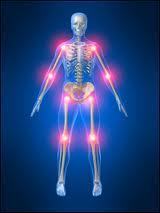

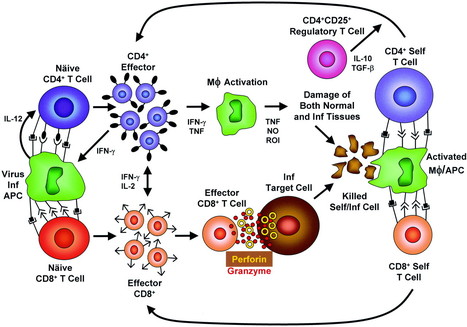



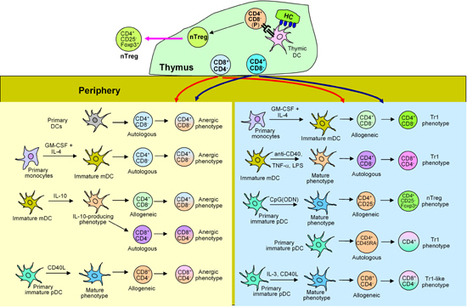
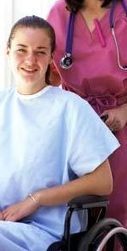


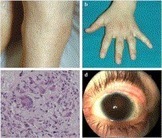
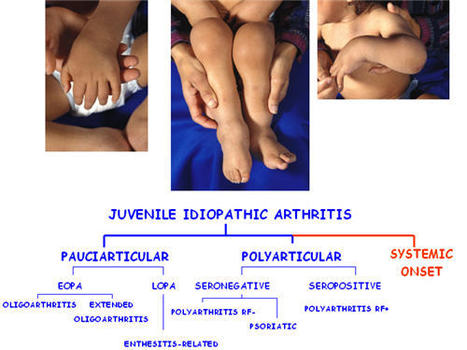



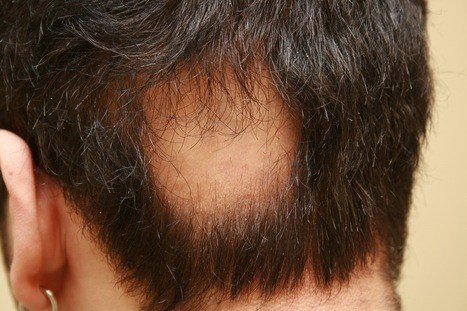
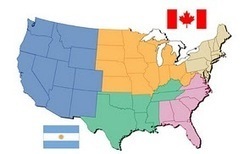

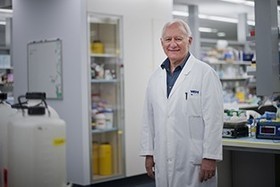




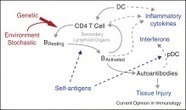







La finalidad es el reciclaje y actualización de profesionales de la inmunología clínica en el campo de Autoinmunidad.
PROFESORADO:
• Alfredo Corell Almuzara (Inmunólogo, Profesor Titular de Inmunología Univ. Valladolid).
• Luis Fernández (Inmunólogo, HU San Pedro de Alcántara).